No edit summary |
No edit summary |
||
| (4 intermediate revisions by 3 users not shown) | |||
| Line 1: | Line 1: | ||
{{stub}}The first "'''''GeGeGe no Kitarō'''''" anime was aired in 1968 on [http://en.wikipedia.org/wiki/Fuji_Television Fuji Television] and produced by [http://en.wikipedia.org/wiki/Toei_Animation Toei Animation]. A new series has been produced each decade since. |
{{stub}}The first "'''''GeGeGe no Kitarō'''''" anime was aired in 1968 on [http://en.wikipedia.org/wiki/Fuji_Television Fuji Television] and produced by [http://en.wikipedia.org/wiki/Toei_Animation Toei Animation]. A new series has been produced each decade since. |
||
__NOTOC__ |
__NOTOC__ |
||
| − | == |
+ | ==About== |
| + | ===Series=== |
||
A list of all anime series of ''GeGeGe no Kitarō'': |
A list of all anime series of ''GeGeGe no Kitarō'': |
||
| Line 40: | Line 41: | ||
|2018 |
|2018 |
||
|[[GeGeGe no Kitarō (2018)]] |
|[[GeGeGe no Kitarō (2018)]] |
||
| + | |97 |
||
| − | |75+ (announced) |
||
|} |
|} |
||
| + | |||
| + | ===Development=== |
||
| + | With good reception in Akuma-kun's live-action adaptation (based on the work also created by Shigeru Mizuki), Toei Animation started planning an anime based on '''Hakaba no Kitarō''' that would be shown on NET (currently TV Asashi) with the same live-action sponsor. The idea did not follow on, as the sponsor refused to finance a project with the word "Hakaba" (meaning "Cemetery"). |
||
| + | |||
| + | The project was then transferred to Fuji TV, but fearing for another withdrawal of sponsors, the team responsible for anime proposed title change to something more "safe". It is not clear what kind of reaction Mizuki had when he received the proposal. In his autobiographical manga, it is not clear what kind of reaction Mizuki received when he received this proposal. In the autobiographical manga "I am GeGeGe", it is shown that the author himself suggested switching to GeGeGe. In addition, in the television drama Gegege no Nyōbō, it is revealed that the title was inspired by the Ge Ge GeGeGe no Ge verses of [[GeGeGe no Kitarō (song)|theme song]] (which was released just before the anime). The phrase "gegege" is based on Mizuki's nickname in "GeGe" childhood, because he can not pronounce his name correctly as a child. |
||
| + | |||
| + | An anime based on the manga rental with the title [[Hakaba Kitarō (2008)|Hakaba Kitarō]] was produced in forty years after the debut of the first series. |
||
| + | |||
| + | ===Adaptations=== |
||
| + | The first anime debuted in January 1968, it is the only black-and-white one and the first Toei Animation anime broadcast on Fuji TV. In October 1971, the second anime began airing and unlike its predecessor, was in color. From this series, Neko-Musume joins the main cast. It is considered a sequence from the previous anime, due to the high similarities and because it does not present reinterpretations of the same stories. Many tales of Mizuki who were not part of Kitaro manga was adapted for the second series due to lack of manga stories to supply the forty-five episodes. |
||
| + | |||
| + | Due to the popularity of the two series, several plans for a new anime emerged until the late 1970s, but did not proceed. A live-action remake was planned in the 1980s, and was shown as a telefilm in the Monday Drama Land special in August 1985, but the realization of a series was abandoned thanks to opposition from Fuji TV. The idea was changed to an animation project and the third anime debuted in 1985, 14 years after the 1971 series. From that version on, Kitarō's anime became remakes of the first two series, emphasizing more the shōnen side of the stories . The rating of the public usually exceeds 20% and, in some cases, reaches 30%. |
||
==Movies== |
==Movies== |
||
| Line 108: | Line 121: | ||
| style="text-align:center; width:16%;"| [[Takeshi Aono]]<br />as<br />[[Nurarihyon]] (3rd & 5th) |
| style="text-align:center; width:16%;"| [[Takeshi Aono]]<br />as<br />[[Nurarihyon]] (3rd & 5th) |
||
| style="text-align:center; width:16%;"| [[Hidekatsu Shibata]]<br />as<br />[[Backbeard]] (3rd & 5th)<br />[[Enma-Daiō]] (2nd & 4th) |
| style="text-align:center; width:16%;"| [[Hidekatsu Shibata]]<br />as<br />[[Backbeard]] (3rd & 5th)<br />[[Enma-Daiō]] (2nd & 4th) |
||
| − | | style="text-align:center; width:16%;"| [[Daisuke Gōri]]<br />as<br />[[Enma-Daiō]] (3rd & 5th)<br />[[Shu |
+ | | style="text-align:center; width:16%;"| [[Daisuke Gōri]]<br />as<br />[[Enma-Daiō]] (3rd & 5th)<br />[[Shu-no-Bon]] (4th) |
| style="text-align:center; width:16%;"| [[Naoki Tatsuta]]<br />as<br />[[Nurikabe]] (4th & 5th)<br />[[Ittan-Momen]] (4th)<br />[[Konaki-Jijii]] (5th) |
| style="text-align:center; width:16%;"| [[Naoki Tatsuta]]<br />as<br />[[Nurikabe]] (4th & 5th)<br />[[Ittan-Momen]] (4th)<br />[[Konaki-Jijii]] (5th) |
||
|} |
|} |
||
| Line 143: | Line 156: | ||
| style="text-align:center; width:16%;"| [[Yūsaku Yara]]<br />as<br />Nurikabe (3rd) |
| style="text-align:center; width:16%;"| [[Yūsaku Yara]]<br />as<br />Nurikabe (3rd) |
||
| style="text-align:center; width:16%;"| [[Kyōko Irokawa]]<br />as<br />[[Yumeko Tendō]] (3rd) |
| style="text-align:center; width:16%;"| [[Kyōko Irokawa]]<br />as<br />[[Yumeko Tendō]] (3rd) |
||
| − | | style="text-align:center; width:16%;"| [[Michitaka Kobayashi]]<br />as<br />Shu |
+ | | style="text-align:center; width:16%;"| [[Michitaka Kobayashi]]<br />as<br />Shu-no-Bon, [[Abura-Sumashi]] (3rd) |
| style="text-align:center; width:16%;"| [[Kōzō Shioya]]<br />as<br />Abura-Sumashi (3rd)<br />Konaki-Jijii (4th) |
| style="text-align:center; width:16%;"| [[Kōzō Shioya]]<br />as<br />Abura-Sumashi (3rd)<br />Konaki-Jijii (4th) |
||
|} |
|} |
||
| Line 184: | Line 197: | ||
| style="text-align:center; width:16%;"| [[Haruna Ikezawa]]<br />as<br />[[Amabie]] (5th) |
| style="text-align:center; width:16%;"| [[Haruna Ikezawa]]<br />as<br />[[Amabie]] (5th) |
||
| style="text-align:center; width:16%;"| [[Sara Nakayama]]<br />as<br />[[Yobuko]] (5th) |
| style="text-align:center; width:16%;"| [[Sara Nakayama]]<br />as<br />[[Yobuko]] (5th) |
||
| − | | style="text-align:center; width:16%;"| [[Katsuyuki Konishi]]<br />as<br />Shu |
+ | | style="text-align:center; width:16%;"| [[Katsuyuki Konishi]]<br />as<br />Shu-no-Bon (5th) |
| style="text-align:center; width:16%;"| [[Miyuki Sawashiro]]<br />as<br />Kitarō (6th) |
| style="text-align:center; width:16%;"| [[Miyuki Sawashiro]]<br />as<br />Kitarō (6th) |
||
| style="text-align:center; width:16%;"| [[Toshio Furukawa]]<br />as<br />Nezumi-Otoko (6th) |
| style="text-align:center; width:16%;"| [[Toshio Furukawa]]<br />as<br />Nezumi-Otoko (6th) |
||
| Line 201: | Line 214: | ||
| style="text-align:center; width:16%;"| [[Bin Shimada]]<br />as<br />Konaki-Jijii, Nurikabe (6th) |
| style="text-align:center; width:16%;"| [[Bin Shimada]]<br />as<br />Konaki-Jijii, Nurikabe (6th) |
||
| style="text-align:center; width:16%;"| [[Kappei Yamaguchi]]<br />as<br />Ittan-Momen (6th) |
| style="text-align:center; width:16%;"| [[Kappei Yamaguchi]]<br />as<br />Ittan-Momen (6th) |
||
| + | |} |
||
| + | {| class="wikitable" |
||
| + | |- |
||
| + | |align=center| [[File:Banjo Ginga.jpg|150x150px]] |
||
| + | |align=center| [[File:Hideyuki Tanaka.jpg|150x150px]] |
||
| + | |align=center| [[File:Hiroshi Kamiya.jpg|150x150px]] |
||
| + | |align=center| [[File:Akio Otsuka.jpg|150x150px]] |
||
| + | |align=center| [[File:Cho.jpg|150x150px]] |
||
| + | |- |
||
| + | | style="text-align:center; width:16%;"| [[Banjō Ginga]]<br />as<br />[[Nanashi]] (6th) |
||
| + | | style="text-align:center; width:16%;"| [[Hideyuki Tanaka]]<br />as<br />Backbeard (6th) |
||
| + | | style="text-align:center; width:16%;"| [[Hiroshi Kamiya]]<br />as<br />[[Rei Isurugi]] (6th) |
||
| + | | style="text-align:center; width:16%;"| [[Akio Ōtsuka]]<br />as<br />Nurarihyon (6th) |
||
| + | | style="text-align:center; width:16%;"| [[Chō]]<br />as<br />Shu-no-Bon (6th) |
||
|} |
|} |
||
</center> |
</center> |
||
| Line 219: | Line 246: | ||
| style="text-align:center; width:16%;"| [[Yonehiko Kitagawa]]<br />as<br />[[Umi-Jijii]] (1st & 3rd)<br />[[Miage-Nyūdō]] (2nd & 4th) |
| style="text-align:center; width:16%;"| [[Yonehiko Kitagawa]]<br />as<br />[[Umi-Jijii]] (1st & 3rd)<br />[[Miage-Nyūdō]] (2nd & 4th) |
||
| style="text-align:center; width:16%;"| [[Taiki Matsuno]]<br />as<br />[[Sazae-Oni]] (4th & 5th)<br />[[Sara-Kozō]] (5th & 6th) |
| style="text-align:center; width:16%;"| [[Taiki Matsuno]]<br />as<br />[[Sazae-Oni]] (4th & 5th)<br />[[Sara-Kozō]] (5th & 6th) |
||
| − | | style="text-align:center; width:16%;"| [[Yūsuke Numata]]<br />as<br />[[Maruge]] (4th & 5th) |
+ | | style="text-align:center; width:16%;"| [[Yūsuke Numata]]<br />as<br />[[Maruge]] (4th & 5th)<br>[[Salaryman Yamada]] (2018) |
|} |
|} |
||
{| class="wikitable" |
{| class="wikitable" |
||
|- |
|- |
||
| − | !colspan=4|[[Salaryman Yamada]] |
+ | !colspan=4|Recurring [[Salaryman Yamada]] voice actors |
|- |
|- |
||
|align=center| [[File:Keiichi Noda.jpg|150x150px]] |
|align=center| [[File:Keiichi Noda.jpg|150x150px]] |
||
| Line 244: | Line 271: | ||
'''HoloModels:''' 3D models for the HoloModels smart phone app.<br /> |
'''HoloModels:''' 3D models for the HoloModels smart phone app.<br /> |
||
'''Tamashii no Yukue:''' Tamashii no Yukue (魂の行方,''The Spirit's Whereabouts'') |
'''Tamashii no Yukue:''' Tamashii no Yukue (魂の行方,''The Spirit's Whereabouts'') |
||
| − | [[vi: |
+ | [[vi:GeGeGe no Kitarō (anime)]] |
[[pt-br:GeGeGe no Kitarō/Anime]] |
[[pt-br:GeGeGe no Kitarō/Anime]] |
||
[[Category:Anime|*]] |
[[Category:Anime|*]] |
||
Revision as of 01:36, 29 April 2020
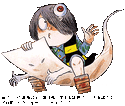
|
This article is a stub. You can help the GeGeGe no Kitarō Wiki by expanding it. |
The first "GeGeGe no Kitarō" anime was aired in 1968 on Fuji Television and produced by Toei Animation. A new series has been produced each decade since.
About
Series
A list of all anime series of GeGeGe no Kitarō:
| Year | Title | Episodes |
|---|---|---|
| 1968-1969 | GeGeGe no Kitarō (1968) | 65 |
| 1971-1972 | GeGeGe no Kitarō (1971) | 45 |
| 1985-1988 | GeGeGe no Kitarō (1985) | 108 |
| 1988 | GeGeGe no Kitarō: Jigoku Hen | 7 |
| 1996-1998 | GeGeGe no Kitarō (1996) | 114 |
| 2007-2008 | GeGeGe no Kitarō (2007) | 100 |
| 2008 | Hakaba Kitarō (2008) | 11 |
| 2018 | GeGeGe no Kitarō (2018) | 97 |
Development
With good reception in Akuma-kun's live-action adaptation (based on the work also created by Shigeru Mizuki), Toei Animation started planning an anime based on Hakaba no Kitarō that would be shown on NET (currently TV Asashi) with the same live-action sponsor. The idea did not follow on, as the sponsor refused to finance a project with the word "Hakaba" (meaning "Cemetery").
The project was then transferred to Fuji TV, but fearing for another withdrawal of sponsors, the team responsible for anime proposed title change to something more "safe". It is not clear what kind of reaction Mizuki had when he received the proposal. In his autobiographical manga, it is not clear what kind of reaction Mizuki received when he received this proposal. In the autobiographical manga "I am GeGeGe", it is shown that the author himself suggested switching to GeGeGe. In addition, in the television drama Gegege no Nyōbō, it is revealed that the title was inspired by the Ge Ge GeGeGe no Ge verses of theme song (which was released just before the anime). The phrase "gegege" is based on Mizuki's nickname in "GeGe" childhood, because he can not pronounce his name correctly as a child.
An anime based on the manga rental with the title Hakaba Kitarō was produced in forty years after the debut of the first series.
Adaptations
The first anime debuted in January 1968, it is the only black-and-white one and the first Toei Animation anime broadcast on Fuji TV. In October 1971, the second anime began airing and unlike its predecessor, was in color. From this series, Neko-Musume joins the main cast. It is considered a sequence from the previous anime, due to the high similarities and because it does not present reinterpretations of the same stories. Many tales of Mizuki who were not part of Kitaro manga was adapted for the second series due to lack of manga stories to supply the forty-five episodes.
Due to the popularity of the two series, several plans for a new anime emerged until the late 1970s, but did not proceed. A live-action remake was planned in the 1980s, and was shown as a telefilm in the Monday Drama Land special in August 1985, but the realization of a series was abandoned thanks to opposition from Fuji TV. The idea was changed to an animation project and the third anime debuted in 1985, 14 years after the 1971 series. From that version on, Kitarō's anime became remakes of the first two series, emphasizing more the shōnen side of the stories . The rating of the public usually exceeds 20% and, in some cases, reaches 30%.
Movies
- First series
- GeGeGe no Kitarō (1968)
- Edited version of Ep. 5 & 6
- Second series
- GeGeGe no Kitarō: Chisōgan (1980)
- Edited version of Ep. 37
- Third series
- GeGeGe no Kitarō (1985)
- GeGeGe no Kitarō: Yōkai Dai-Sensō (1986)
- GeGeGe no Kitarō: Saikyō Yōkai Gundan! Nippon Jōriku!! (1986)
- GeGeGe no Kitarō: Gekitotsu!! Ijigen Yōkai no Dai-Hanran (1986)
- Fourth series
- GeGeGe no Kitarō: Dai-Kaijū (1996)
- GeGeGe no Kitarō: Obake Nighter (1997)
- GeGeGe no Kitarō: Yōkai Tokkyū! Maboroshi no Kisha (1997)
- Ominous Sky! Yōkai Castle (1997)
- Fifth series
- Theme park attraction
Theme Song
- GeGeGe no Kitarō (song) (as opening)
- Karan Koron no Uta (as ending for the 1968, 1971, and 1996 anime)
Casting
Main Cast
The following actors appeared in multiple adaptations as the same character(s):
| Main cast members |
|---|
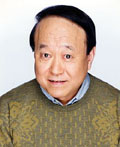
|
| Isamu Tanonaka as Medama-Oyaji (1st~5th, Hakaba) |

|
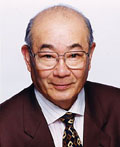
|

|

|

|
| Masako Nozawa as Kitarō (1st & 2nd, Hakaba) Medama-Oyaji (6th) |
Chikao Ōtsuka as Nezumi-Otoko (1st & 2nd, Hakaba) Hakusanbō (4th & 5th) |
Yōko Ogushi as Sunakake-Babaa (1st) Neko-Musume (2nd) |
Ichirō Nagai as Konaki-Jijii (1st & 3rd) |
Keiko Yamamoto as Sunakake-Babaa (2nd, 4th, & 5th) Shisa (3rd & 5th) |
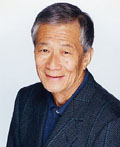
|
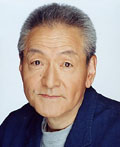
|
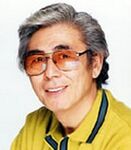
|

|
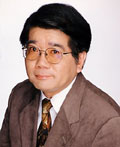
|
| Jōji Yanami as Ittan-Momen (3rd & 5th) |
Takeshi Aono as Nurarihyon (3rd & 5th) |
Hidekatsu Shibata as Backbeard (3rd & 5th) Enma-Daiō (2nd & 4th) |
Daisuke Gōri as Enma-Daiō (3rd & 5th) Shu-no-Bon (4th) |
Naoki Tatsuta as Nurikabe (4th & 5th) Ittan-Momen (4th) Konaki-Jijii (5th) |
Other Main Cast Members
| Main cast members | ||||
|---|---|---|---|---|
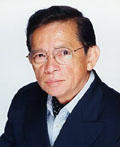
|

|

|

|

|
| Kōji Yada as Konaki-Jijii (2nd) |
Takuzō Kamiyama as Shinigami (2nd) |
Keiko Toda as Kitarō (3rd) |
Kei Tomiyama as Nezumi-Otoko (3rd) |
Yūko Mita as Neko-Musume (3rd) |

|

|

|

|

|
| Hiroko Emori as Sunakake-Babaa (3rd) |
Yūsaku Yara as Nurikabe (3rd) |
Kyōko Irokawa as Yumeko Tendō (3rd) |
Michitaka Kobayashi as Shu-no-Bon, Abura-Sumashi (3rd) |
Kōzō Shioya as Abura-Sumashi (3rd) Konaki-Jijii (4th) |

|

|

|

|

|
| Ryō Horikawa as Jigoku-Dōji (3rd) |
Yōko Matsuoka as Kitarō (4th) |
Shigeru Chiba as Nezumi-Otoko (4th) |
Chinami Nishimura as Neko-Musume (4th) |
Tomomichi Nishimura as Nurarihyon (4th) |

|

|

|

|

|
| Minami Takayama as Kitarō (5th) |
Hiromi Konno as Neko-Musume (5th) |
Wataru Takagi as Nezumi-Otoko (5th) |
Yūko Maruyama as Kawauso (5th) |
Machiko Toyoshima as Rokuro-Kubi (5th) |

|

|
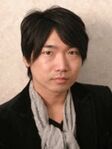
|

|
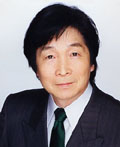
|
| Haruna Ikezawa as Amabie (5th) |
Sara Nakayama as Yobuko (5th) |
Katsuyuki Konishi as Shu-no-Bon (5th) |
Miyuki Sawashiro as Kitarō (6th) |
Toshio Furukawa as Nezumi-Otoko (6th) |

|

|

|

|

|
| Umeka Shōji as Neko-Musume (6th) |
Yukiyo Fujii as Mana Inuyama (6th) |
Mayumi Tanaka as Sunakake-Babaa (6th) |
Bin Shimada as Konaki-Jijii, Nurikabe (6th) |
Kappei Yamaguchi as Ittan-Momen (6th) |

|
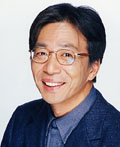
|

|

|

|
| Banjō Ginga as Nanashi (6th) |
Hideyuki Tanaka as Backbeard (6th) |
Hiroshi Kamiya as Rei Isurugi (6th) |
Akio Ōtsuka as Nurarihyon (6th) |
Chō as Shu-no-Bon (6th) |
Minor Recurring Cast Members
| Minor cast members | |||
|---|---|---|---|

|

|

|

|
| Akiko Tsuboi as Witch (1st~3rd) Kitarō's Mother (2nd & 3rd) |
Yonehiko Kitagawa as Umi-Jijii (1st & 3rd) Miage-Nyūdō (2nd & 4th) |
Taiki Matsuno as Sazae-Oni (4th & 5th) Sara-Kozō (5th & 6th) |
Yūsuke Numata as Maruge (4th & 5th) Salaryman Yamada (2018) |
| Recurring Salaryman Yamada voice actors | |||
|---|---|---|---|

|

|

|

|
| Keiichi Noda 1st~3rd (8 episodes) |
Hiroshi Ōtake 1st~3rd (5 episodes) |
Ryōichi Tanaka 2nd~5th (4 episodes) |
Sanji Hase 1st~3rd (3 episodes) |
Other Media
Spirit and Art
Main Article: Spirit and Art
Spirit and Art is an initiative that is being overseen by Toei Animation. It consists of three projects:
Tamashii no Okuribi: Tamashii no Okuribi (魂の送り火,The Ceremonial Bonfire of the Spirits)
HoloModels: 3D models for the HoloModels smart phone app.
Tamashii no Yukue: Tamashii no Yukue (魂の行方,The Spirit's Whereabouts)
